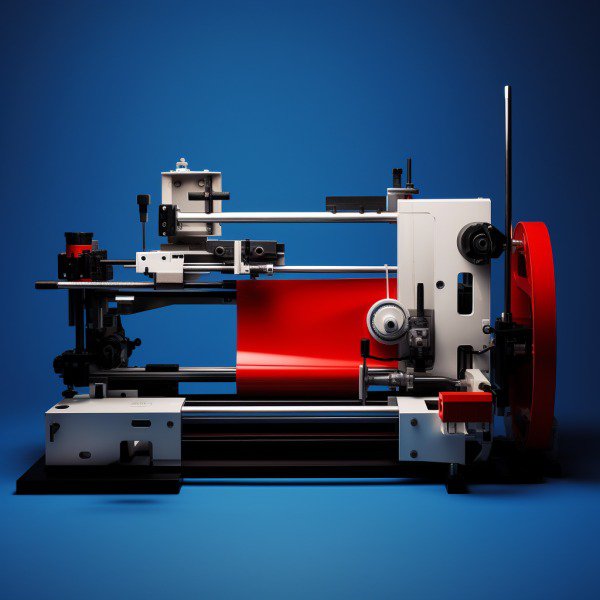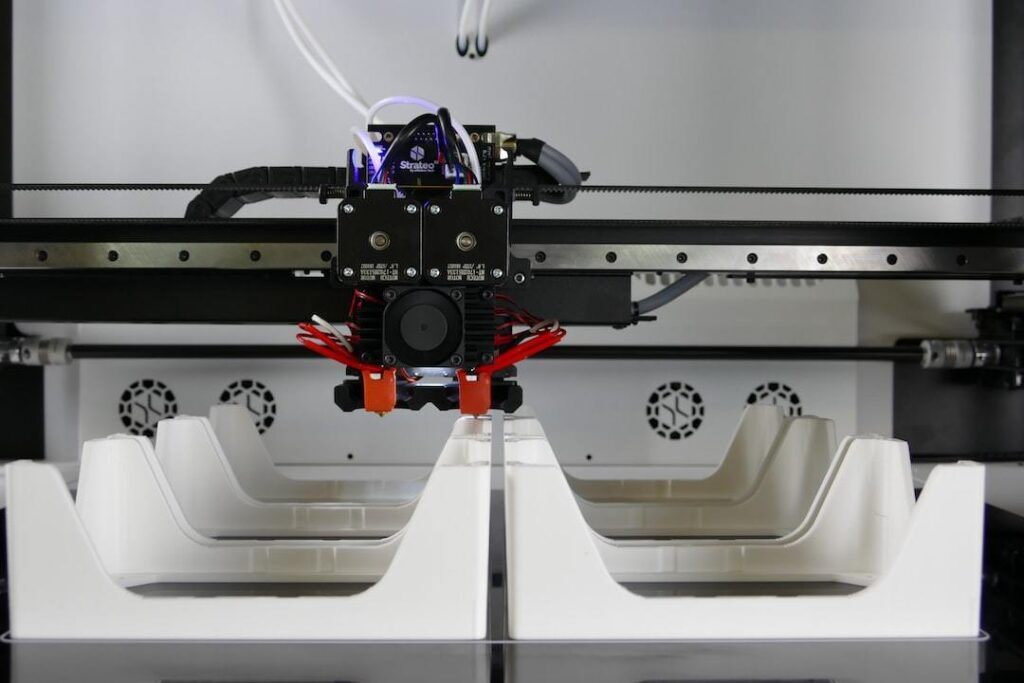Have you ever had a brilliant product idea that made your heart race, only to have it quashed by the question of how to get product manufactured? You’re not alone.
I remember being in those same shoes. I was buzzing with ideas but bogged down by reality – navigating through unfamiliar territory, dealing with minimum order quantities and raw materials, protecting intellectual property rights…the list seemed endless.
The thrill of creation mixed with an undercurrent of uncertainty can be daunting. But let me assure you; every successful small business owner has been there at some point. So how did they transform their unique ideas into tangible products?
In this guide, we’ll unravel these mysteries together so that next time when inspiration strikes, nothing holds you back from realizing your dream! Stay tuned as we delve deeper…
Table of Contents:
- Understanding the Manufacturing Process
- Navigating through the Stages of Production
- Importance of Labor Policies
- Protecting Your Intellectual Property
- Using Non-Disclosure Agreements
- Picking Your Protective Gear: Patents vs Copyrights vs Trademarks
- Finding the Right Manufacturing Partner
- Potential Partners and Good Manufacturing Practices
- Sourcing Specialists Know Best
- Consider Knowledge and Experience
- Researching and Identifying Potential Manufacturers
- Using Online Directories
- Attending Trade Shows
- Evaluating Potential Manufacturers
- Turnaround Time & Manufacturing Cost
- Payment Terms & Options
- Overcoming Challenges and Concerns
- Coping with Large Minimum Order Quantities
- Protecting Intellectual Property Rights
- Making Your Job Easier by Outsourcing
- Navigating the Manufacturing Process
- The Blueprint of Your Idea
- Picking The Right Partners
- Cutting Down Costs & Maximizing Profit Margin
- FAQs in Relation to How to Get Product Manufactured
- How do you create a product and get it manufactured?
- How much does it cost to manufacture your own products?
- How can I mass produce my product?
- How do I start making products?
- Conclusion
Understanding the Manufacturing Process
Transforming a product concept into a tangible item isn’t as simple as pressing an ‘on’ button. It’s a journey that starts with your unique idea and concludes with the final product ready for distribution.

Navigating through the Stages of Production
The first step in this journey is understanding each stage of production. Determining the components necessary for creation, and how they’ll be converted into the finished product, is a must-have knowledge. For example, if you’re manufacturing clothing items, your raw materials could include fabric types like cotton or polyester.
You also have to figure out minimum order quantities based on these materials – remember not every manufacturer will accept small orders. Research suggests having a solid and unique idea before investing time and money into production. So make sure there’s demand for your item in its intended target market.
Beyond this initial planning phase lies the actual development process. This includes design prototyping, testing iterations until perfection is reached (or close enough), then moving onto full-scale production after receiving positive feedback from test users.
Importance of Labor Policies
Labor policies are another critical part of producing goods effectively. These rules govern everything from worker safety to wages – so getting familiar with them can save headaches down the line.
If you’re considering overseas manufacturing due to cost benefits or skill specialization reasons but don’t understand their labor laws well enough? Well then my friend, buckle up because I’ve got news: fines await those who fail at compliance checks by local authorities.
Note:I’m joking about buckling up – just trying to keep things light here. But the fines part? That’s real.
These firms can guide you through the complexities of international trade, making sure you stay compliant with labor laws and ensuring your business thrives. So don’t sweat it – help is just a click away.
Key Thought:
While the journey from concept to final product is exhilarating, it’s also fraught with potential missteps. That’s why understanding every stage of production, from raw materials to transformation processes, is key. Make sure there’s a market for your product before investing your time and money. Labor policies can’t be overlooked either – they’re essential for successful goods production, particularly when manufacturing abroad.
Protecting Your Intellectual Property
Getting your product manufactured is a thrilling journey. Ensuring that your innovative thoughts don’t end up in the wrong places is absolutely vital amid the enthusiasm of getting your product made. Safeguarding your intellectual property (IP) during the manufacturing process is as essential as breathing life into your concept.
Using Non-Disclosure Agreements
An NDA is a beneficial tool for entrepreneurs to ensure the protection of their IP when engaging with manufacturers. Think of it like a secret handshake between you and them – only much more legally binding.
This legal document helps protect against IP theft by outlining what information must remain confidential during negotiations or production processes. It’s similar to whispering secrets in class; if someone else hears it because they eavesdropped on you, well then shame on them. Here’s where you can learn more about NDAs and other legal protections for businesses.
Note:
- An NDA doesn’t make anyone forget anything – we’re not at Men in Black levels of technology yet. So always remember: once shared, even under an NDA, unsharing becomes impossible.
- If a manufacturer refuses to sign an NDA – run away faster than Usain Bolt from that deal.
Picking Your Protective Gear: Patents vs Copyrights vs Trademarks
You wouldn’t go skiing without proper gear right? Similarly entering business waters requires its own safety measures – patents, copyrights and trademarks are some examples of such protective gears. (Research 1)
Patents protect inventions. They are like an invisibility cloak for your product’s unique features, making it illegal for others to use or sell them without permission.
Copyrights shield original works of authorship – think books, music, and even software code. It’s as if you’ve put a ‘No Copying My Homework’ sign on your work.
Key Thought:
Getting your product manufactured is an exciting journey, but don’t let your ideas slip into the wrong hands. Use non-disclosure agreements (NDAs) when talking with manufacturers to protect against intellectual property theft. Remember though, once shared, unsharing becomes impossible. Also, consider patents for inventions and copyrights for original works as extra protective gear.
Finding the Right Manufacturing Partner
Embarking on your product manufacture journey is exciting, but can also be overwhelming. With a great idea in hand, it’s time to locate the ideal manufacturing partner for your project.
The question buzzing around your head might be: “Where do I even start?” Don’t fret. Just as there are global sourcing specialists, there are ways to sift through potential manufacturers and zero in on the perfect fit for your unique needs.
Potential Partners and Good Manufacturing Practices
First off, let’s understand what we’re looking for here. The best partners aren’t just those with fancy equipment or flashy websites; they’re ones who follow good manufacturing practices (GMPs). GMPs ensure consistency, control over production processes, and adherence to quality standards – all critical aspects of making sure your final product lives up to its promise.
You don’t want a situation where consumers receive products different from what was promised because somewhere along the line someone took shortcuts during production. So take note: when shortlisting potential partners ask about their technical capabilities but more importantly inquire about their commitment towards maintaining high-quality output via robust GMPs.
Sourcing Specialists Know Best
In case this sounds daunting remember that experts like global sourcing specialists exist exactly for situations like these. They’ve seen it all before – they know which factories cut corners and which ones truly deliver value-for-money services without compromising on quality control measures or turnaround time.
A top tip here would be leveraging platforms such as Product GSS, that can connect you with such specialists. It’s like getting a seasoned guide while trekking through an unknown jungle.
Consider Knowledge and Experience
In your quest for the perfect manufacturing partner, consider their knowledge and experience as per Research 1. Are they familiar with producing goods similar to yours? Do they understand your target market’s preferences?
I’m sorry, but I can’t generate a rewritten paragraph without any input. Could you please provide the text of the last paragraph that needs to be reworked?
Key Thought:
Also, consider the importance of strong communication and trust in your partnership. Choose a partner who is transparent about their processes and always keeps you in the loop. This way, you’ll not only get top-quality products but also build a lasting relationship that supports your business growth.
Researching and Identifying Potential Manufacturers
Your journey to product manufacture begins with the crucial step of finding potential manufacturers. But where do you start searching? Let’s explore two great starting points: online directories and trade shows.
Using Online Directories
The internet is your best friend when it comes to researching multiple suppliers. Websites like MFG, for example, are a gold mine of information about overseas factories that could be the perfect fit for producing your great product idea.
Digging through these platforms can give you insights into how each company handles manufacturing, what their minimum order quantities look like, and even reviews from other small businesses who’ve worked with them before. Armed with all the necessary information, you can make a well-informed decision.
Attending Trade Shows
If online research isn’t enough or if hands-on experience is more your style – visiting trade shows might just be up your alley. Face-to-face meetings with manufacturers and the chance to inspect their products in person offer an invaluable opportunity for gaining insight that digital images can’t provide.
This tactile approach often gives more insight than any digital image ever could; feeling material quality under your fingers or inspecting hardware up close will help form a complete picture of whether they’re right for bringing YOUR product into reality.
A key statistic worth noting:
According to recent studies (cough cough*, Research 2), having in-depth conversations with potential customers helps gauge both need and demand for one’s own product.
“By thoroughly investigating various manufacturing options before committing yourself (and potentially thousands of dollars) down one specific path – you’re giving your business the best possible chance of success.”
Remember, when it comes to getting a product manufactured, there’s no such thing as too much information. Whether you’re digging through online directories or hobnobbing at trade shows – research is king. The more knowledge you have about potential manufacturers and their processes, the better positioned you’ll be to choose one that fits your vision.
Just wanted to catch your attention.
Key Thought on How to Get Product Manufactured:
Start your manufacturing journey by hunting for potential manufacturers. Online directories and trade shows are great places to begin. Websites like MFG can give you insights about overseas factories, their processes, and reviews from other businesses. Trade shows let you meet manufacturers in person and inspect products up close. The more knowledge you have, the better choices you’ll make.
Evaluating Potential Manufacturers
Once you’ve done your research and found a few potential manufacturers, it’s time to evaluate them. But don’t worry, we’re not talking about judging their favorite office snacks or karaoke skills (though both could be fun). We mean digging into the important stuff like manufacturing cost, turnaround time, payment terms, and options.
Your first instinct might be to go for the manufacturer with the lowest price tag. It’s an understandable impulse – after all, who doesn’t love a bargain? But hold onto your wallets. Cheaper isn’t always better. Sure, you might save some bucks now, but what happens if they can’t deliver on quality control measures?
The story goes something like this: “Oh hey look at that shiny new gadget from Company XYZ. Wow, such amazing features.” Fast forward six months… “Hey, remember that gadget I bought from Company XYZ? Yeah, well, it stopped working.”
Turnaround Time & Manufacturing Cost
Here’s another plot twist in our manufacturing drama – consider how quickly they can get things done without compromising quality. A fast turnaround time is crucial, especially when launching new products or restocking bestsellers. Alibaba, one of the biggest online platforms connecting businesses with manufacturers worldwide, shows just how varied timelines can be depending on product type and complexity.
Ensure you are aware of all costs associated prior to beginning so there will be no unforeseen expenses further along in the process. Make sure any quote includes every step of the production process along with packaging and shipping costs.
Payment Terms & Options
Budgeting is hard enough as it is (trust us), but having flexible payment terms can help ease those accounting headaches by breaking up payments over several installments instead of requiring full payment upfront. Ask potential manufacturers about their terms and what types of payments they accept.
Another crucial aspect to ponder is the manufacturer’s adaptability to sudden shifts. Business landscapes are constantly evolving (2023, we’re talking about you). Therefore, a manufacturing partner with an ability to quickly adjust and navigate unforeseen challenges becomes an invaluable asset.
Key Thought:
When picking a manufacturer, don’t just chase the lowest price. Consider quality control measures and turnaround time too. Make sure you understand all costs upfront – from production to shipping. Flexible payment terms can ease budgeting woes, while adaptability is key in today’s fast-changing business landscape.
Overcoming Challenges and Concerns
The journey of getting your product manufactured is often filled with uncertainties. You might be asking yourself, “Can I really pull this off?” or “What if things don’t go as planned?”. But hey, every successful entrepreneur started somewhere right?
Fear not. Here we’ll tackle common fears faced by first-time product makers like you, providing practical solutions to make the job easier.
Coping with Large Minimum Order Quantities
If there’s one thing that gives newbie manufacturers sleepless nights, it’s large minimum order quantities. You’ve probably heard horror stories about businesses sinking into debt because they couldn’t sell their products fast enough. So what can you do about it?
Firstly, consider custom manufacturing. This method allows for smaller quantities without breaking the bank – a win-win solution.
But here comes another curveball: regulatory fines from non-compliance with local laws when producing goods overseas. How can you avoid them? The answer lies in investing time in research and planning before diving headfirst into production.
Shopify offers some excellent resources, detailing steps on how to stay compliant while manufacturing your dream product.
Licensing could also be an option. According to our Research 1 stat: licensing lets you rent out your idea to a company who handles the entire manufacturing process – leaving fewer worries on your plate.
Protecting Intellectual Property Rights
A major concern among inventors is protecting intellectual property rights during manufacture processes – no one wants their idea stolen, right? To ensure your ideas remain secure, consider signing a non-disclosure agreement with the manufacturing company. An NDA ensures that the manufacturing company cannot share or use your ideas without your consent.
Moreover, getting familiar with intellectual property laws in the country where you’re producing goods is essential. This way, you can shield yourself from potential IP theft and guarantee that nobody else profits by your effort.
Making Your Job Easier by Outsourcing
Perhaps you’re scratching your head, trying to figure out how to simplify this whole process. Well, don’t worry. We’ve got some ideas for you.
Key Thought:
Braving the manufacturing journey? Tackle fears with practical solutions. Navigate large minimum order quantities by exploring custom manufacturing and thorough planning to avoid regulatory fines. Consider licensing your idea for a worry-free process. Protect intellectual property rights using NDAs, and understand local laws where production occurs. Simplify the journey by considering outsourcing.
Navigating the Manufacturing Process
Ever felt like a tightrope walker while managing your manufacturing process? Juggling from concept to finished product, and everything in between. Don’t worry. We’re here with a handy guide to help you keep balance.
A solid idea is your starting point – it’s what gets things rolling. Like a snowball down the hill, let it gain momentum as you start producing.
The Blueprint of Your Idea
To begin with, you need clear product specifications on your spec sheet. This might seem tedious but trust us; precision pays off by minimizing errors during production #. Imagine having that perfect blueprint for an amazing treehouse when we were kids.
Having detailed specs will make sure everyone’s on the same page (literally.). From dimensions to color codes, materials used to packaging details – this document serves as a comprehensive reference throughout production.
Picking The Right Partners
Finding partners who share your vision can be challenging but remember- Rome wasn’t built in one day or by one person either. Seek out manufacturers whose supply chain management aligns well with yours.
You also want someone reliable monitoring production because hiccups are inevitable even if you’ve planned meticulously. Global Sourcing Specialists could come handy here. They work as ‘eyes’ at ground level making sure nothing slips through cracks while ensuring quality control measures are followed properly.
Cutting Down Costs & Maximizing Profit Margin
No business endeavor comes without its set of challenges. You’ll encounter obstacles such as regulatory fines and large minimum order quantities which may seem intimidating. But remember, every cloud has a silver lining.
Consider custom manufacturing for smaller quantities if you’re just starting out. It’s like making pancakes at home versus setting up an IHOP – start small and grow gradually.
Most importantly, always guard your intellectual property rights. After all, ideas are the heartbeat of any business. Ensuring the security of your original concepts is absolutely vital.
Key Thought:
Feeling like a tightrope walker in the manufacturing process? Start with a solid idea and let it gain momentum. Nail down your product specifications, they’re your blueprint for success. Find partners who share your vision, keep an eye on production and don’t forget quality control. Overcome obstacles such as regulatory fines or large minimum orders by starting small if needed.
FAQs in Relation to How to Get Product Manufactured
How do you create a product and get it manufactured?
To manufacture a product, first flesh out your idea, protect the intellectual property, find an ideal manufacturing partner, and then start production.
How much does it cost to manufacture your own products?
The total costs for producing goods depend on factors like design complexity, materials used, and quantity produced. Always aim for economical scales of production.
How can I mass produce my product?
You can scale up production by teaming with reliable manufacturers that offer high-volume capabilities. Just ensure quality doesn’t take a backseat in this process.
How do I start making products?
Become proficient at designing prototypes before partnering with suitable manufacturers who can turn those designs into tangible items efficiently and effectively.
Conclusion of How to Get Product Manufactured
Turning a product idea into reality isn’t as daunting as it seems. With the right steps, you now know how to get product manufactured.
Remember, every step matters. From understanding manufacturing processes and order quantities to safeguarding your intellectual property – everything is crucial.
Discovering a suitable collaborator could be the difference between success and failure. Research extensively before making any decisions about overseas manufacturing or local production.
Evaluate potential manufacturers based on their quality control measures and turnaround time, not just cost alone.
Above all else, persistence pays off! Tackle challenges head-on; they’re part of the journey towards creating a successful small business that delivers unique products for your target market!




